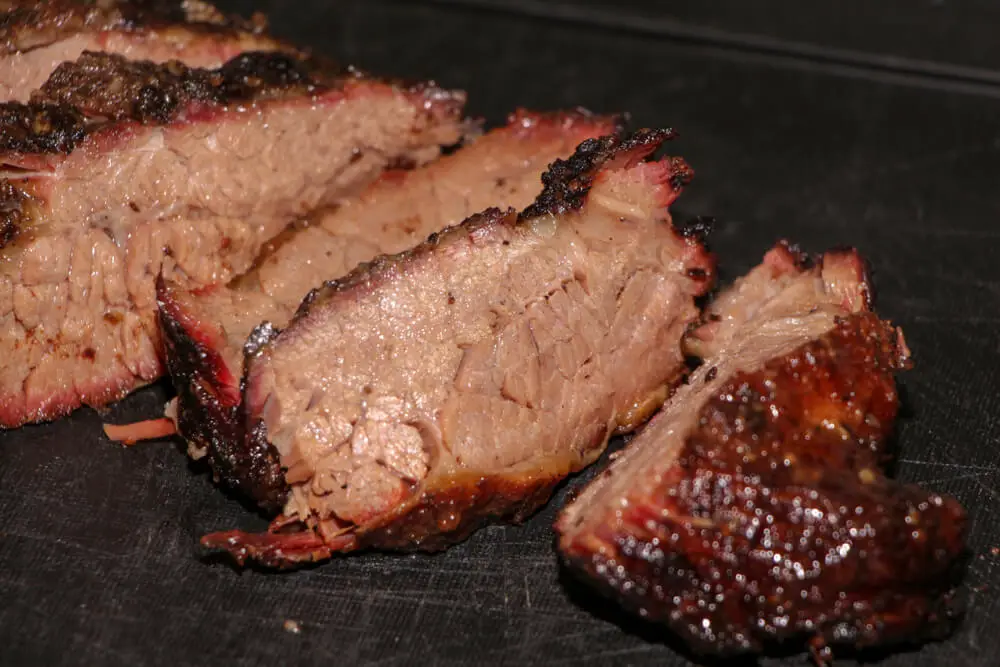So you’ve picked up a nice piece of steak from the grocery store, and now you’re wondering how to prepare it. Well, one thing you should always do is rest your steak before, and after cooking it.
But what does that mean, exactly? And why is it important?
In short, resting your steak allows the juices and flavors to redistribute throughout the meat, making it more tender and flavorful.
It also allows the steak to come up to a more consistent internal temperature, so you don’t end up with a piece of overcooked beef.
Let’s take a closer look…
Contents
- 1 Why Should You Rest Your Steak Before Cooking?
- 2 Why Should You Let Steak Rest After Cooking?
- 3 What If I Don’t Have Time to Rest My Steak?
- 4 What Does Resting Steak Even Mean?
- 5 Does Resting Steak Actually Do Anything?
- 6 Should You Cover Steak When Resting?
- 7 Steps To Rest Steak Properly
- 8 How Long Should You Allow Steak To Rest?
- 9 Other Considerations
- 10 Conclusion
- 11 Other Popular Posts
Why Should You Rest Your Steak Before Cooking?
If you’re someone who takes your steak out of the fridge and then immediately puts it on the grill, you’re doing it wrong.
One of the most important things to do when cooking steak is to let it rest at room temperature for about 30 minutes before cooking.
This will help the steak cook evenly and prevent it from becoming tough or dry.
Why? Well, when a steak is cold, the center will take a lot longer to cook than the outside.
Plus, the cold meat will start to draw the juices outwards, towards the surface.
By letting your steak come up to room temperature first, you’ll help it cook more evenly and prevent all that juices from flowing out.
Why Should You Let Steak Rest After Cooking?
Not only should you allow your steak to rest before cooking, but you should let it rest after cooking, as well.
Again, this will help the juices redistribute and make the steak more tender and flavorful.
It will also help the steak come up to a more consistent internal temperature, so you don’t end up with a pink center or an overcooked exterior.
What If I Don’t Have Time to Rest My Steak?
It’s totally okay.
If you don’t have a lot of time, just skip the resting step and serve your steak as quickly as possible after cooking.
Just try to remember that it won’t be as tender or flavorful as a piece of meat that has been allowed to rest.
In fact, those who have been cooking steak for a long time would tell you that the choice between letting your meat rest or eating it immediately is similar to choosing whether or not you want your baked potato to cool down before consuming it.
In other words, there’s no denying that a piece of piping hot steak is going to taste better than one that has been allowed to cool down.
But if you’re looking for the most tender, juicy, and flavorful steak possible, then you should definitely take the time to let it rest.
What Does Resting Steak Even Mean?
Resting steak simply means letting it sit at room temperature for a short period of time.
This allows the juices inside the meat to redistribute and come up to a more consistent internal temperature.
The resting step should not be confused with marinating your steak, which involves soaking the meat in a flavorful liquid.
Resting simply means letting your meat come up to room temperature before cooking it, and letting it rest after cooking.
It’s an important step that shouldn’t be skipped if you want the most tender, juicy, and flavorful steak possible.
So, next time you’re cooking up a steak, remember to give it plenty of time to rest!
Does Resting Steak Actually Do Anything?
Some people doubt that resting steak is just a waste of time and doesn’t actually produce better results.
Well, if you’re one of those people who wants to skip the resting step and see for yourself, go right ahead.
But just remember that the steak will be slightly tougher and drier than a piece that has been allowed to rest properly.
You’ll still taste the flavors, but it won’t be as tender and juicy as it could be.
In my experience, I have always allowed at least 20 minutes rest before cooking and at least 5 after it is cooked before consuming.
This has proven to produce a juicy and delicious steak every time.
Should You Cover Steak When Resting?
Some people recommend covering your steak while it’s resting, in order to keep the heat in.
Others say that this isn’t necessary and that the steak will actually rest better if it’s left uncovered.
My advice? Try both methods and see which one you prefer.
Covering the steak will help keep it warm while leaving it uncovered will allow it to cool down a bit.
Sometimes I will wrap the cooked steak in foil to help it retain heat, and other times I’ll leave it open to the air.
It all depends on your preference and how much time you have to let the steak rest.
I do find it best if you cover the steak in foil if you’re not going to eat it within about 5 minutes of cooking.
But if you’re willing to wait a bit longer, then I would recommend leaving it uncovered.
Steps To Rest Steak Properly
If your going to rest your steak after cooking then follow these simple instructions.
- Let the steak come up to room temperature before cooking it.
- Cook the steak to your desired doneness.
- Let the steak rest for 5-10 minutes after cooking.
- Serve and enjoy!
Some people also recommend covering the steak while it’s resting, in order to keep the heat in.
Others say that this isn’t necessary and that the steak will actually rest better if it’s left uncovered.
How Long Should You Allow Steak To Rest?
There’s no one definitive answer to this question.
Some people say that 5 minutes is enough, while others recommend waiting up to 20 or even 30 minutes.
I find that 5-10 minutes is a good amount of time for the steak to rest without becoming too cold.
But if you have the time, go ahead and let it rest for as long as 10-20 minutes.
The longer you let your steak rest, the more time it has to reabsorb the juices that were lost during cooking.
I always allow my cooked steak to rest for at least 5 minutes before consuming it.
This is just enough time for the juices to redistribute without becoming too cold.
What if I’m in a hurry?
If you’re in a hurry and don’t have time to let your steak rest, then go ahead and eat it.
But just know that you’re sacrificing some of the juiciness and flavor that could have been yours if you had taken the time to let it rest.
You may also want to consider using a thermometer to make sure that you don’t overcook your steak.
If a rare or medium-rare steak is too red for you, then just know that the juices will be more fluid and there won’t be as much flavor as some people prefer.
If it’s more comfortable for you to have a well-done steak, then by all means go ahead and cook it longer.
But just remember that you’re going to be cooking out all the flavor and juiciness that a rare or medium-rare steak has to offer.
Other Considerations
Keep in mind that different cuts of steak will require different amounts of time to rest.
A bone-in rib steak, for example, is going to need more time resting than a flank or skirt steak.
The thicker the cut of meat, the longer it’s going to rest before you’re ready to devour it.
It’s also important to note that the temperature of your kitchen will affect how long the steak needs to rest.
If it’s a hot day and your kitchen is stuffy, then the steak will need more time to rest than if it’s a cool day and your kitchen is drafty.
All these factors should be taken into account when you’re planning on cooking a steak and when you’re resting it before enjoying it.
But no matter what, always remember to wait at least 5 minutes after cooking and 20-30 minutes after cooking for a really thick steak.
This should allow enough time for the juices to redistribute so that every bite of the steak is packed with flavor and juiciness.
Conclusion
In conclusion, I find that resting steak is an important step that should not be missed when preparing and serving steak.
It not only allows the steak to cool down a bit, but it also allows the juices to redistribute so that every bite is flavorful and juicy.
Remember that it isn’t a necessity to allow steak to rest, but if you want the best results each and every time, then I would recommend taking the time to let it rest.
Thanks for taking the time to read this post and I hope it’s been useful for you.
Feel free to share it with other steak lovers.

